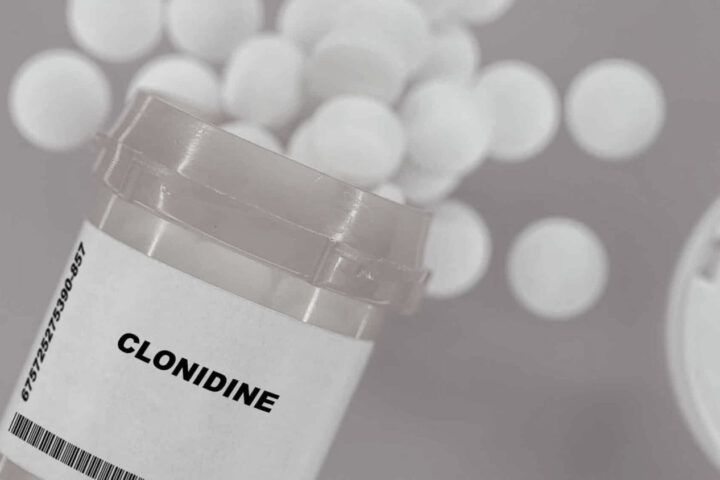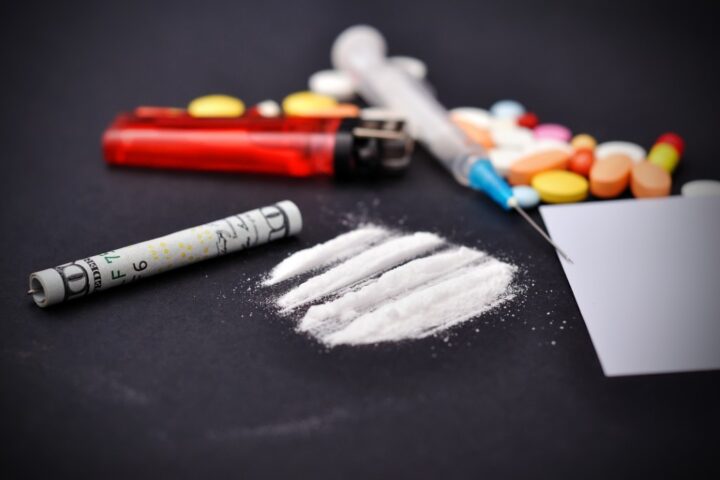Drug and alcohol recovery programmes are available at a variety of different care levels at treatment centres located all over South Africa. Inpatient treatment at a rehabilitation facility is one of the highest levels of care that a client can receive, and a stay of thirty to sixty days is typically recommended immediately after detoxification. You might also be curious about what kinds of things you ought to bring with you to the rehabilitation facility where you will be staying. We have compiled a general list to provide you with an overview of what to bring with you and what you should leave at home, despite the fact that this varies depending on the treatment centre that you choose.
If you or a loved one has already enrolled in a treatment programme at a luxury rehab, you’ve already completed the most important step toward overcoming your addiction. If you or a loved one have not yet enrolled in a treatment programme, you should do so as soon as possible. A little pre-treatment planning can go a long way toward making sure your primary treatment goes as smoothly and quickly as possible. Consider what items you might want to bring with you to the facility to make your stay more comfortable. Treatment in an inpatient setting is typically required for at least four weeks.
If you are unsure about what to bring to rehabilitation, the first thing you should do is ask the staff there for information. The vast majority of treatment centres provide their patients with an information sheet or packet that details the things they permit and those things they do not permit. Contact the centre for further explanation if you have received this packet and you still have questions after reading it.
When compiling the preparation list for your residential rehabilitation project, keep the following points in mind:
Clothing that is appropriate for both the season and the culture
There are a few important things to remember when packing your suitcase for your time in rehabilitation. First, make sure you’re dressed appropriately for the time of year you’ll be visiting your destination. It is possible that you will need to account for significant differences in temperatures experienced at your facility during the day and night, depending on its location. In addition, you should be aware of any predicted weather issues, such as rain or extreme heat. Some substance abuse treatment facilities provide complementary activities such as yoga and fitness training. Investigate the various activities that you could participate in, and make sure to bring the necessary equipment.
The following are some examples of checklist items to consider:
- Dress comfortably for the center’s daily activities and leisure activities by wearing casual clothing.
- Clothing and shoes designed specifically for athletic use
- Hiking and other outdoor activities-appropriate boots.
- A daypack for touring
- Dress comfortably for lounging and receiving spa treatments.
- Soft and comfortable sleepwear
- There are plenty of clean socks and underwear.
- If your rehabilitation facility is near the water or has a pool, bring a swimsuit.
- A broad-brimmed cap or hat for sunny destinations.
Check out the guidelines in your center’s dress code for more information. Remember to research local traditions and bring clothing appropriate for the local culture if you plan to participate in any public activities while attending a destination rehab programme in another country. Laundry services are usually provided as standard in extended-stay luxury accommodations. Because of this, you won’t need to bring new clothes for the entire 28 days, but you should still bring enough options to last at least one week.
Sanitary products
A large number of high-end rehabilitation facilities have spas and grooming services; some even have full-service nail and hair salons. However, because toiletries are specific items, you should bring items that correspond to your personal preferences and expectations regarding personal hygiene. When you’re away from home, bringing your favourite shampoos, soaps, fragrances, and skincare products can provide a sense of indulgence and comfort. You may feel more at ease as a result of this. Keep in mind that the facility may require you to bring in only unopened items.
Identification and documents, as well as other relevant information
The majority of upscale treatment facilities will advise you to bring a few key items of information with you during your 28-day stay in residential treatment. These typically include items such as the following:
Please bring your government-issued photo identification or passport.
- Your insurance certificate
- All current medications must be in their original packaging and clearly labelled as coming from the pharmacy.
- A list of everyone whose contact information you want to share with them regarding the progression of your treatment.
- A debit card, a chequebook, or a credit card are all acceptable forms of payment.
- A sufficient amount of cash to cover general store purchases, souvenirs, and other incidental costs
Pack a journal or notebook, simple jewellery like a watch or wedding ring, envelopes and stamps for mailing letters, and photographs of loved ones or family members. If you intend to bring reading material, keep in mind that the programme you are participating in may only allow you to read about things that will help you recover.
Your mobile device and portable computer
In today’s world, the vast majority of adults own a cell phone or a laptop computer and use them frequently. However, having access to social media and maintaining regular connections to substances, dependent relationships, or any of the other addictions that brought you to rehab in the first place can stymie your recovery. Many rehabilitation centres may not allow you to use the internet during your stay in order to create a calming and distraction-free environment in which you can focus solely on your recovery.
It is possible that you will be required to hand over your electronic devices for the duration of your stay, or that their use will be restricted. It’s possible that the treatment programme in which you’re enrolled will allow you to keep your phone and laptop with you and use them whenever you want, or that it will make special accommodations for patients who need to attend to professional responsibilities while receiving care. Different rehabilitation centres have different rules for using technology. If having internet access is important to you, you should contact the admissions staff at your preferred rehabilitation centre as soon as possible.
Your Animal
Having access to pets, according to a number of studies, can provide a variety of significant benefits to people working to recover from substance abuse or addiction. Pets are permitted in some of the world’s most effective inpatient drug rehab programmes, and some of those programmes also provide animal-assisted therapy, a treatment modality that has grown in popularity in recent years. You may be permitted to bring your own dog, cat, or other pet if they are well-trained, friendly, well-socialized, and physically capable of making the journey, but this will depend on the programme in which you are participating. In some facilities, however, you may only be able to interact with specially trained therapy animals that are housed on the premises. Check with your centre to learn more about any programmes that allow you to choose either option.
What You Shouldn’t Bring to Rehabilitation
When preparing for your 28-day stay in treatment, it is critical to be aware of the categories of items that should be excluded from your packing list. The following are some examples of things that are generally prohibited in all rehabilitation facilities:
- Alcohol and all forms of illegal drugs
- Prescription medications that are not part of the treatment plan that has been approved for you.
- Medications that have been prescribed for someone else
- Pornography
- Firearms, knives, and other types of weapons
- Medications that have been opened without a prescription
- Mouthwash laced with alcoholic beverages
- alcohol-containing eau de toilettes or colognes
- Toenail polish
- Nail polish removal solution
Prior to your arrival, you purchased alcoholic beverages and/or food items.
Playing cards, video games, and handheld gaming or viewing devices are typically not permitted in treatment facilities because they can be a source of distraction, and they strive to create an environment conducive to recovery. Inquire with your preferred establishment about any additional items that are prohibited during your stay.
If you are looking for a treatment facility that is a good fit for you, one factor that you should consider is whether or not you are permitted to bring certain items into treatment. Do you have any additional questions about what you should pack for your extended stay in a high-end treatment programme? Visit our luxury rehab directory to find contact information for world-class treatment facilities.
What Most Rehabilitation Facilities Recommend You Bring
The allowed and prohibited items are regulated in a different manner by each and every treatment facility. As you get ready for rehabilitation, make sure to ask the admissions staff for a packing list. The following is a list of items that are recommended to be packed in most situations.
- A list of the people you want to be involved in your treatment, including their names, addresses, and phone numbers (loved ones, healthcare professionals, 12 step sponsors, etc.).
- Jewelry that you wear every day and consider essential, such as your wedding ring or a watch. Otherwise, keep valuables at home.
- An alarm clock that lacks a radio. Some centres will provide these, so check with yours before going out and purchasing one.
- Your current prescription medication in its original pharmacy bottle, complete with the information label. Any liquid medications must be brand new and unopened. Bring a list of all your medications and dosages as well.
- A small sum of money ($50-$100 in smaller bills for store runs, vending machines, and so on).
- To pay for treatment medications, use your chequebook, credit card, or debit card.
- Insurance cards and identification (driver’s licence, passport, etc.).
- A business card (if your facility requires them for long distance phone calls).
- A journal or notebook.
- If you want to mail letters, you’ll need stamps and envelopes.
- Keep photos of your loved ones in your room or wallet.
- Your rehabilitation centre will most likely provide you with reading materials. If you want to bring your own, they must be recovery, self-help, or spiritual in nature. TIP: Bring paperback books instead of hardcovers because they are easier to transport.
Inpatient or residential rehab is a programme that operates around the clock and requires patients to live at the facility while receiving treatment for substance use disorders. During this time, patients are required to take time away from their jobs, families, and/or schools. 1 Not everyone needs to enter an inpatient programme. In the end, the environment in which you undergo rehabilitation should be as relaxed as is practicable given the requirements of your particular case. Rehabilitative treatment should keep you safe, assist you in entering recovery, and help you avoid relapsing.
The most intensive form of drug treatment is known as inpatient treatment, followed by residential treatment, intensive outpatient programmes, and finally outpatient treatment.
The number of hours of treatment that are provided by outpatient programmes can vary, but in general, the number of hours is less than nine per week, and you continue to live in your own home during treatment.
Another type of residential setting for people who are going through the recovery process are sober living houses. The vast majority of sober living homes do not offer treatment, but they do typically have a community where residents meet and hold each other accountable, share the responsibilities of running the home, and are encouraged or required to attend self-help and 12-step programmes.



